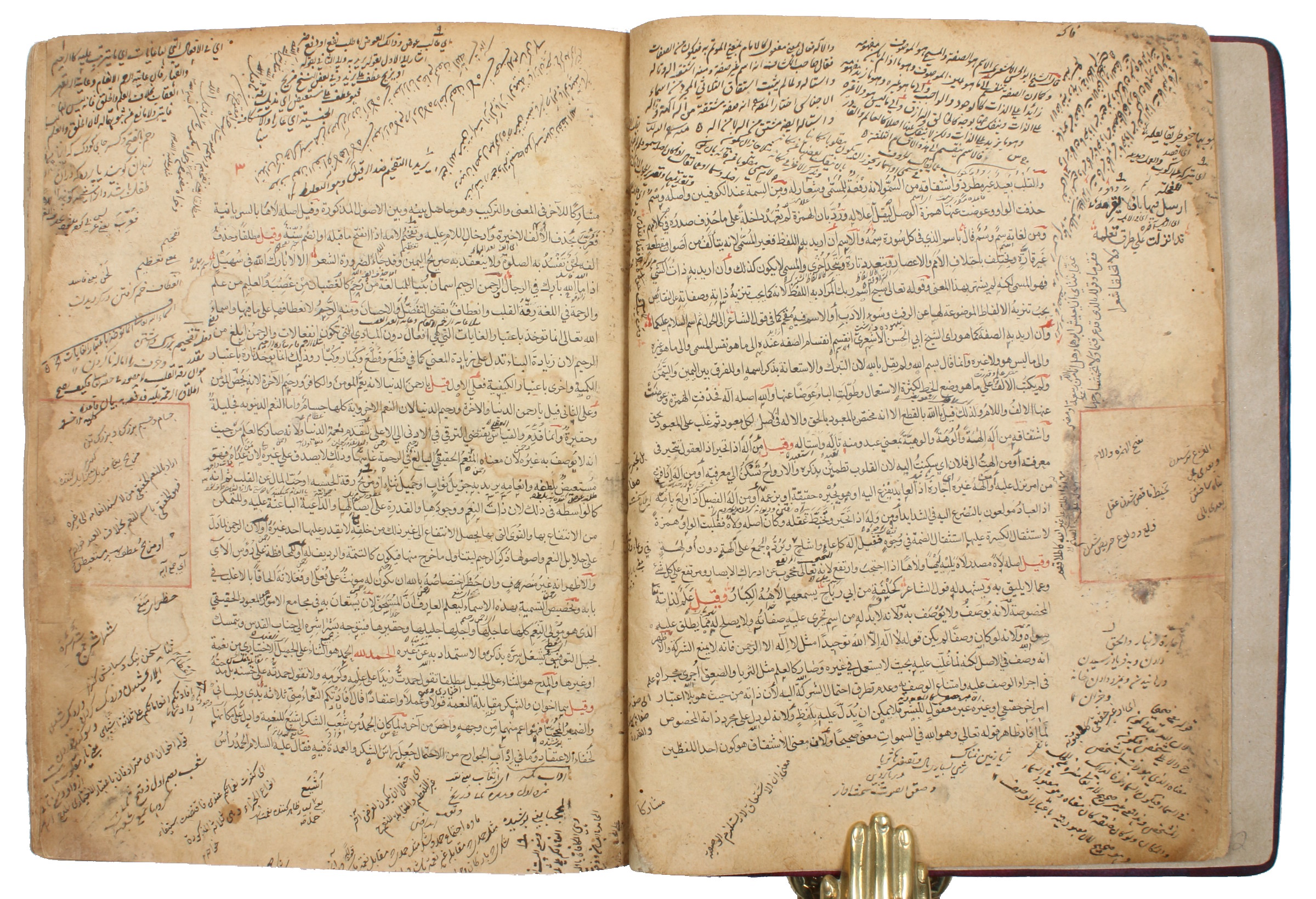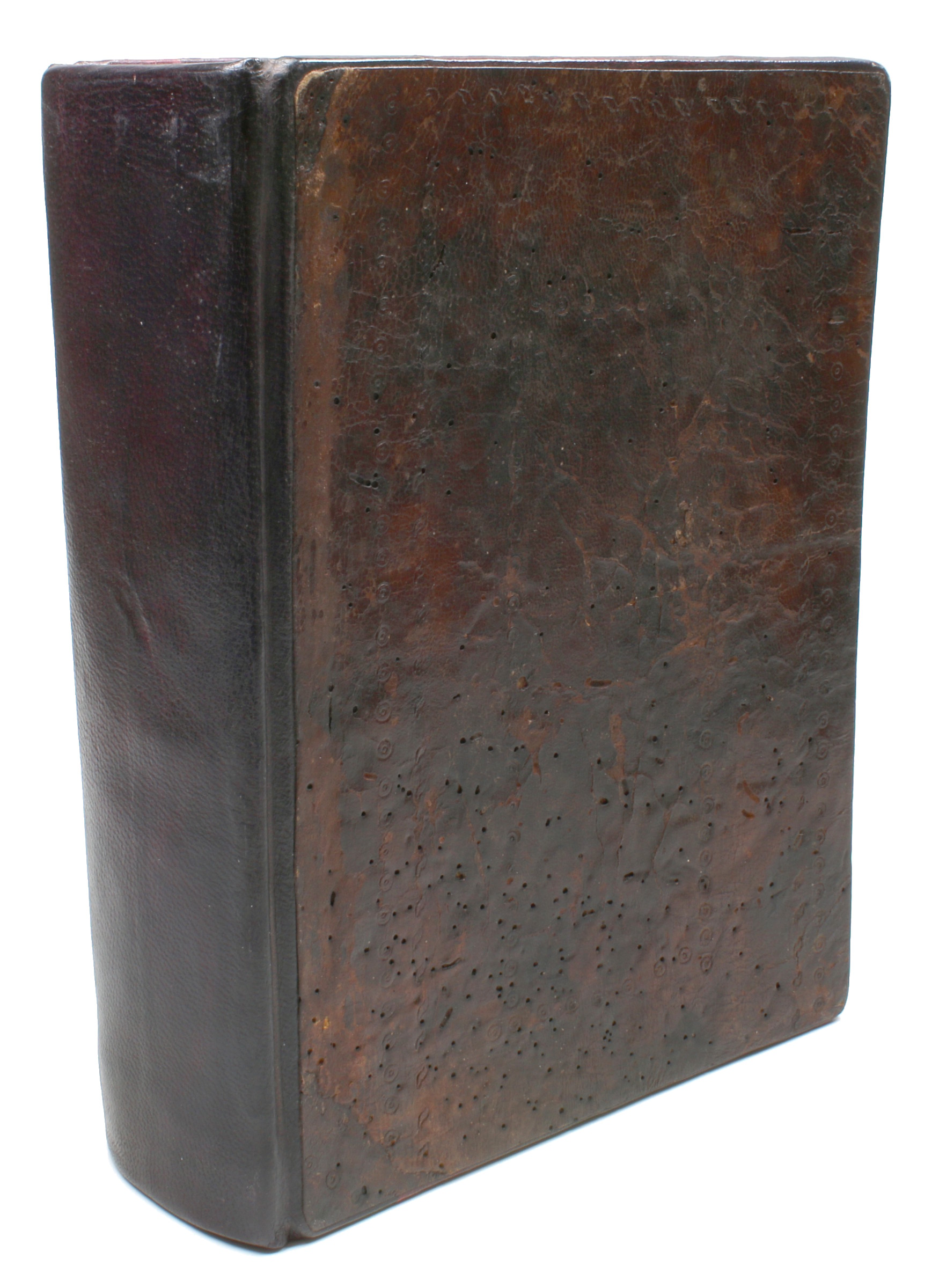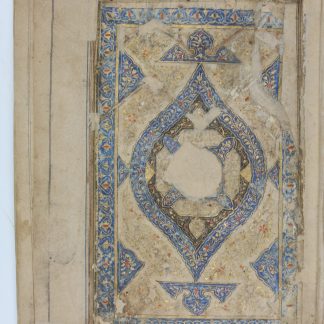Al-Tafsir al-Baydawi
Anwar al-tanzil wa-asrar al-ta'wil.
4to (180 x 236 mm). Arabic manuscript on polished oriental paper. 546 ff. (foliated in a somewhat later hand), 23 lines per extensum, written in black naskh, with chapter headings and emphases in red. Contemporary blindstamped full calf, restored and spine rebacked.
€ 8.500,00
Rare, complete late 16th century Arabic manuscript of the "Anwar al-Tanzil wa-Asrar al-Ta'wil" ("The Lights of Revelation and the Secrets of Interpretation"), better known as "Tafsir al-Baydawi". One of the most popular classical Sunni Qur'anic interpretational works (tafsir), it was composed by the 13th-century Muslim scholar al-Baydawi (d. 1319?), who flourished in Persia. The "Tafsir al-Baydawi" is considered to contain the most concise analysis of the Qur'anic use of Arabic grammar and style to date and was hailed early on by Muslims as the foremost demonstration of the Qur'an's essential and structural inimitability ("i'jaz ma'nawi wa-lughawi") in Sunni literature. Due to its fame and influence, the work has been selected by scholars as being culturally important and significant, and many commentaries have been written on Baydawi's work. According to the contemporary Islamic scholar Gibril Fouad Haddad, the work "became and remained for seven centuries the most studied of all tafsirs" and it is to be regarded as "the most important commentary on the Qur'an in the history of Islam".
Paper rather browned; some waterstaining to margins of the first 70-odd leaves and occasionally beyond. The first 130 pages are closely annotated in the margins by a near-contemporary owner with several additional annotated sheets (some folding) pasted in. Old waqf stamps to recto of first leaf. Restored binding uses original cover material, showing traces of worming. Removed from the Kutub Khana-i-Sultani (Sultani Library), one of the libraries the Nawabs of Bahawalpur, established in 1926 at Dera Nawab Sahib in south Punjab.
GAL I, 417.
















